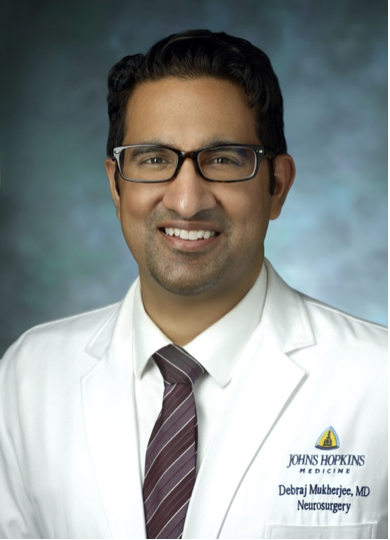Adham Khalafallah, MD
Nicholas Rowan, MD
Debraj “Raj” Mukherjee, MD, MPH
Cushing’s syndrome (CS) is a rare endocrine disorder caused by chronic exposure to excess cortisol, with an annual incidence of 10 –15 cases per million.1 CS manifests with many physical problems, including central obesity, hypertension, hirsutism, muscle weakness, gonadal dysfunction, and hyperglycemia, as well as psychiatric and psychological disturbances, such as major depression, mania, anxiety disorders, and cognitive impairment. As a result, CS can have a profound effect on patients’ health-related quality-of-life (HRQoL). Even after achieving a hormonal cure, patients with CS may score lower on HRQoL measures of general well-being, anxiety, and depression relative to healthy controls.2 The potential long-term sequelae of this disease make the assessment of HRQoL outcomes in patients with CS paramount.
In an effort to better assess HRQoL outcomes in patients with CS, 2 disease-specific questionnaires, CushingQoL and the Tuebingen CD-25, were developed in 2008 and 2012 respectively. These validated disease-specific instruments improve our understanding of health dimensions most relevant to patients with CS and can help us identify areas for improved QoL management in patients with CS.
CushingQoL is a self-administered instrument consisting of 12 questions, each measured on a 5-point Likert scale, with a total score ranging from 0 to 100, and with higher scores indicating better quality-of-life. This instrument evaluates two primary sub-scales, namely physical problems and psychosocial issues.3 The Tuebingen CD-25 questionnaire consists of 25 items measuring the subdomains of depression, sexual activity, environment, eating behaviour, bodily restrictions, and cognition. 4 CushingQOL allows for a less granual assessment of domains affected by CS relative to the Tuebingen CD-25 questionnaire, but CushingQOL has been externally validated and mapped to other instruments, such as EQ-5D, allowing clinical researchers to measure cost-utility and other measures of cost-effectivness through use of CushingQOL.
Recent literature has demonstrated both clinically and statistically significant postoperative improvement in QoL scores following the endoscopic endonasal approach (EEA) for management of CS.5 This minimally invasive, endonasal approach has allowed for improved intraoperative visualization, decreased perioperative complications, shorter postoperative length of stay, and improved rates of surgical cure during its increased adoption over the past 20 years. Advances in minimally invasive, endoscopic techniques continue to evolve. For instance, at Johns Hopkins, we are rigorously studying the impact of the EEA on patient-reported QoL outcomes while seeking new, innovative ways to improve patient care. Two current intiatives are specifically focused on reducing potential sinonasal morbidities incurred with use of the endonasal corridor. We are actively investigating the use of a novel endonasal access guide in an effort to decrease intranasal trauma. Moreover, we are piloting use of mucosal grafts to enhance postoperative sinonasal healing while decreasing postoperative nasal morbidities, such as nasal crusting and nasal deformities, following the EEA for management of pituitary neoplasms.
The horizon continues to expand for clinicians and researchers seeking to improve HRQoL in CS. We at Johns Hopkins are excited to be working with the Cushing’s Support and Research Foundation to maximize QoL in CS and provide truly personalized care to all our patients.
Editor’s Note: EEA is technically the way most transsphenoidal adenectomies (TSA) are performed today, vs. the sub-labial approach (through the upper gums). Also, you can review and take the CushingQol and Tuebingen CD-25 surveys in the Questionnaire Appendix at the back of this issue.
References:
- Broder MS, Neary MP, Chang E, Cherepanov D, Ludlam WH. Incidence of Cushing’s syndrome and Cushing’s disease in commercially-insured patients <65 years old in the United States. Pituitary. 2015;18(3):283-289.
- Van Aken MO, Pereira AM, Biermasz NR, van Thiel SW, Hoftijzer HC, Smit JW, Roelfsema F, Lamberts SW, Romijn JA. Quality of life in patients after long-term biochemical cure of Cushing’s disease. J Clin Endocrinol Metab. 2005;90:3279–3286.
- Webb SM, Badia X, Barahona MJ, Colao A, Strasburger CJ, Tabarin A, van Aken MO, Pivonello R, Stalla G, Lamberts SW, Glusman JE. Evaluation of health-related quality of life in patients with Cushing’s syndrome with a new questionnaire. Eur J Endocrinol. 2008;158:623–630. *summarized in the Research section of this issue
- Milian M, Teufel P, Honegger J, Gallwitz B, Schnauder G, Psaras T. The development of the Tuebingen Cushing’s disease quality of life inventory (Tuebingen CD-25). Part I: construction and psychometric properties. Clin Endocrinol (Oxf) 2012;76:851–860. *summarized in the Research section of this issue
- Badia X, Valassi E, Roset M, Webb SM. Disease-specific quality of life evaluation and its determinants in Cushing’s syndrome: what have we learnt? Pituitary. 2014;17(2):187-195.
About the Authors:

Adham Khalafallah, MD is a Post-Doctoral Research Fellow in the Department of Neurosurgery at Johns Hopkins Medical Institutes. His research focuses on mining “big data” and developing novel patient-reported outcome measures in those with brain and skull base lesions, including Cushing’s disease.

Nicholas R. Rowan, MD is an Assistant Professor of Otolaryngology-Head and Neck Surgery at Johns Hopkins University School of Medicine. He received his medical degree from Rutgers University, completed residency training at the University of Pittsburgh Medical Center and fellowship training in rhinology and endoscopic skull base surgery at the Medical University of South Carolina. Dr. Rowan performs a full complement of endoscopic sinus surgeries, including orbital and skull base procedures. He is actively involved in outcomes research and quality of life investigations in both patients with advanced rhinologic diseases and tumors of the skull base. His specific research interests include the senses of smell and taste, as well as improving patient quality of life. His research interests directly align with his clinical practice as Dr. Rowan also serves as the Department of Otolaryngology-Head and Neck Surgery Patient Experience Liaison in an effort to champion excellence in patient care.

Debraj “Raj” Mukherjee, MD, MPH is an Assistant Professor of Neurosurgery at Johns Hopkins University School of Medicine as well as Director of Neurosurgical Oncology at Johns Hopkins Bayview Medical Center. He completed a fellowship in open and endoscopic skull base tumor surgery at University of Pittsburgh Medical Center, and his clinical practice focuses on the treatment of patients with pituitary tumors, including Cushing’s disease. His clinical work and research emphasize the development of individual treatment plans that optimize survival and quality of life in all patients. His work has been supported by the American Medical Association, National Cancer Institute, and National Institutes of Health.




Sorry, comments are closed for this post.